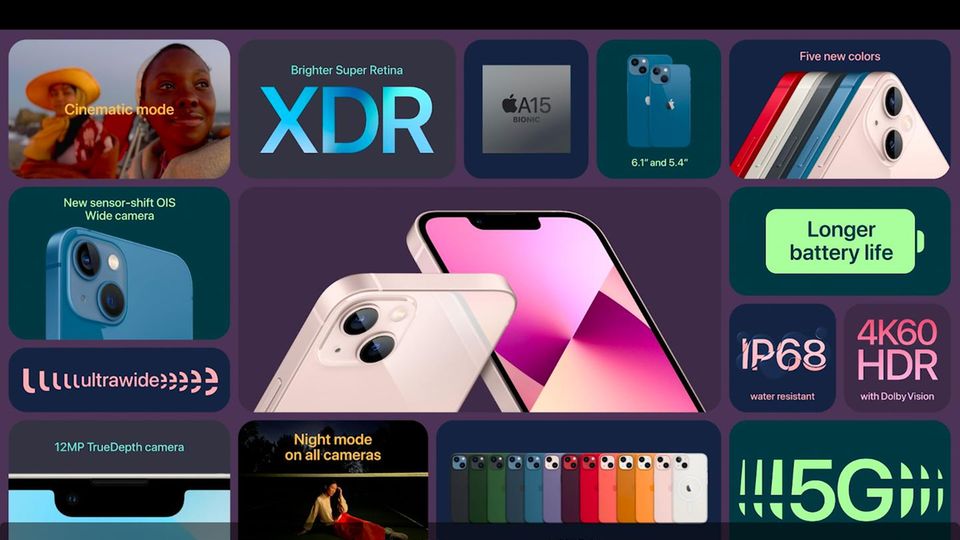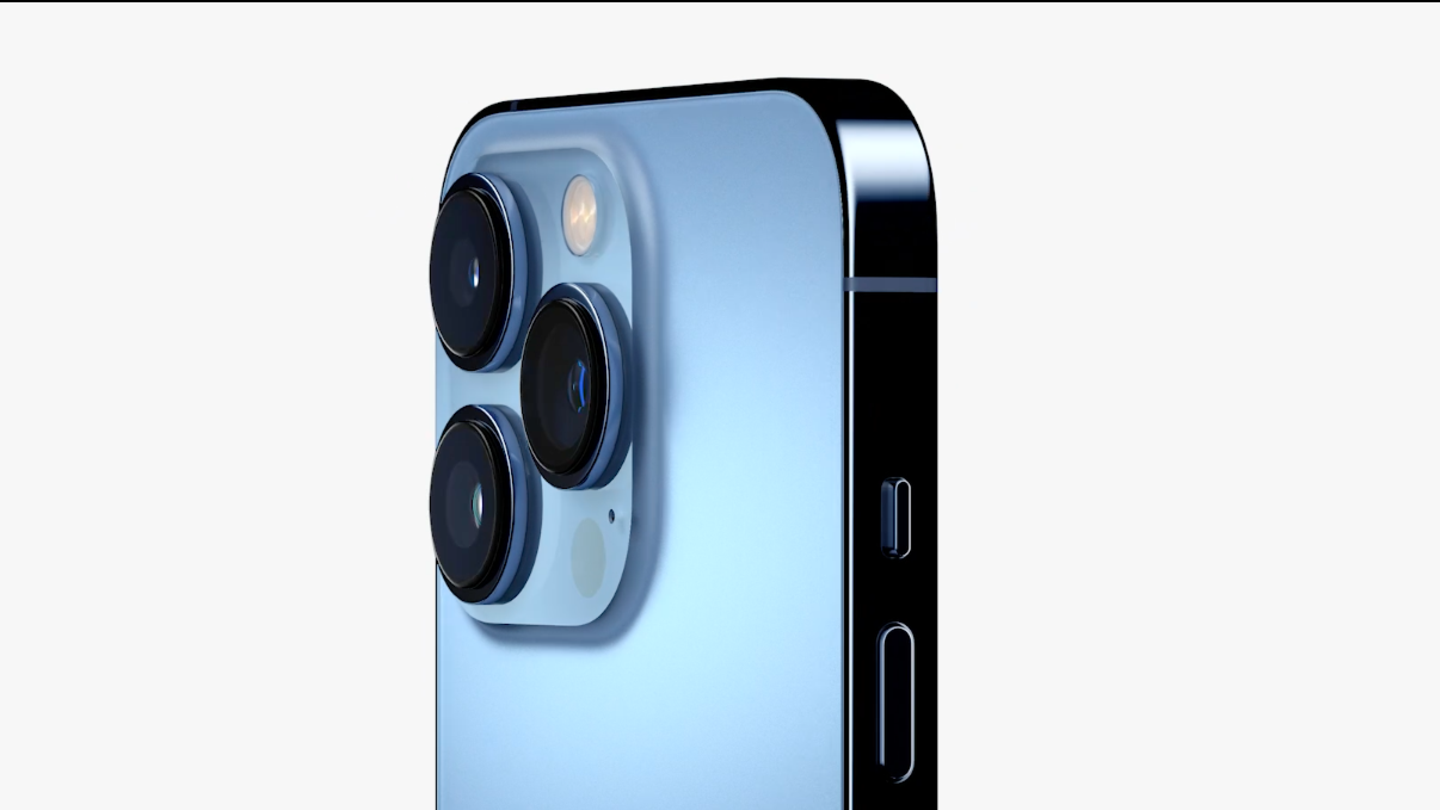At its September event, Apple presented four new iPhones: iPhone 13, iPhone 13 Mini, iPhone 13 Pro and iPhone 13 Pro Max. Here you can find out what the new models can do.
At its big autumn event under the motto “California Streaming”, Apple presented its four new iPhone models. iPhone 13, iPhone 13 Mini, iPhone 13 Pro and iPhone 13 Pro Max are very much based on the previous models. But Apple has gone a long way with the camera.
Visually, however, you have to take a closer look to recognize the new iPhones. After Apple dared to redesign it for the first time since the iPhone X last year, the angular look of its very successful predecessor is of course retained this year. The sizes also remain the same. The Mini also has a display diagonal of 5.4 inches, the Standard and Pro models are 6.1 inches, and the Max Pro is 6.7 inches. The new models can be recognized by two details: On the one hand there is the camera recess in the display, called the notch, which does not disappear, but visibly shrinks in the Pro models. On the other hand, the camera bulge on the back has grown to make room for the larger lenses.

Apple relies fully on cameras
Probably the most important innovation can be found in all models: As is often the case when the design does not change, Apple primarily relies on the camera to convince its customers. This is supposed to be done in several ways. On the other hand, Apple is now bringing its improved image stabilization, which was previously only found in the iPhone 12 Max Pro, with the name Sensor Shift to the other models. In addition, the ultra-wide-angle camera has been revised and should now deliver better images in all models even in poor lighting conditions.
There are also innovations for videographers. Apple’s powerful portrait function can now also be used in video recordings. With numerous recalculations, Apple now also wants to improve the image quality of videos, as is already known from the ProRes mode for photos. And: With photo styles you can finally determine the preferred look of the pictures yourself, the camera then applies it automatically. How well this works can only be shown by a detailed test.
In the Pro models, Apple uses an even larger sensor to simplify even more light and details. The zoom was increased to three times the magnification. Other manufacturers offer ten times as much, but that should still be enough for most users. Strong: For the first time, night mode is supported for all lenses including the tele lens.
Faster, better, longer
Many of the camera features are only possible because, as expected, Apple has also upgraded the processor. The A15 is of course faster than its predecessor, Apple is – once again – setting a new standard. Although the old chips have long been fast enough for every application in everyday life, this has advantages: The live calculation of video and photos on the new models is probably not possible on any other smartphone on the market.
In other respects, too, the iPhone is technically impressive. Especially with the Pro models, Apple has pulled out all the stops: With a new type of XDR display, the frame rate has been increased to 120 Hertz. If quieter content is shown, however, it lowers to show electricity. The technology baptized by Apple Promotion has already made scrolling as smooth as butter on other top smartphones, it was time for Apple to follow suit. Especially since the iPad Pro already offers the function.
iPhone: pricing and availability
From Friday, September 17th, Apple will release pre-orders for all models, the official start of sales is one week later on September 24th.
When it comes to prices, Apple sticks to its predecessor:
- iPhone 13 Mini: ab 799 Euro
- iPhone 13: from 899 euros
- iPhone 13 Pro: from 1149 euros
- iPhone 13 Pro Max: from 1249 euros
David William is a talented author who has made a name for himself in the world of writing. He is a professional author who writes on a wide range of topics, from general interest to opinion news. David is currently working as a writer at 24 hours worlds where he brings his unique perspective and in-depth research to his articles, making them both informative and engaging.




